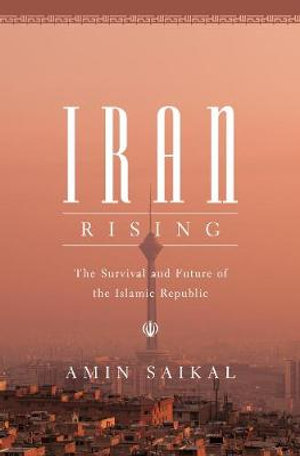Iran rising by Amin Saikal

The third great revolution of the twentieth century occurred in 1978-79. Like the Russian and Chinese revolutions it changed everything within its sphere of influence. It changed the source of the power and how it was administered, a system change, complete as it was rapid.
Prior to the revolution much of Iran's oil wealth was squandered by the US-backed Shah of Iran on a military build-up and an ineffective modernisation plan, neither of which benefited the vast majority of the population. The Shah's reign, at times brutal, and US policy, and many other factors discussed in the book, created the ideal environment for revolution. Add to this the undoubted charismatic and pragmatic leadership of Ayatollah Khomeini and the events of 1979 became inevitable.
Many of the groups that participated in the overthrow of the Shah's regime did not anticipate the total Islamisation of Iran. Some expected an inclusive method of governing. This did not eventuate; under the leadership of Khomeini his Shia faction dominated. What followed were purges and the elimination of those that were now deemed traitors to the cause.
In the first half of this book, Amin Saikal covers other significant events such as the war with Iraq that took a terrible toll on both countries. The successor to Khomeini as Supreme leader (Khameini) and the various elected presidents of the republic (some of them traditionalist, some reformist) feature here as well.
Any progressive change to the strict Islamic order was going to be difficult. Only with the arrival of the popular Rouhani (president 2013 onwards) did Khameini begin to ease the society's restrictive ways.
This comprehensive book will be essential reading to those interested in Iran, the region, its politics, people and culture. The country and its people are often portrayed in negative terms by opportunistic politicians in the west. Iran is a complex country with a complex history. Bear in mind that a country's politics do not necessarily reflect its people. I have been fortunate enough to meet many Iranians; they are warm, welcoming and generous.
Half of Iran's 80 million people are under the age of 30 years. Born after the revolution many of them have a desire for greater liberty. It remains to be seen if the republic is able to accommodate their wishes with progressive reforms and greater involvement in the global community.
Amin Saikal has provided a balanced and informative history of the republic that helps explain its past and its possible future. This book would be a great resource for students of global politics.
Robert McNair